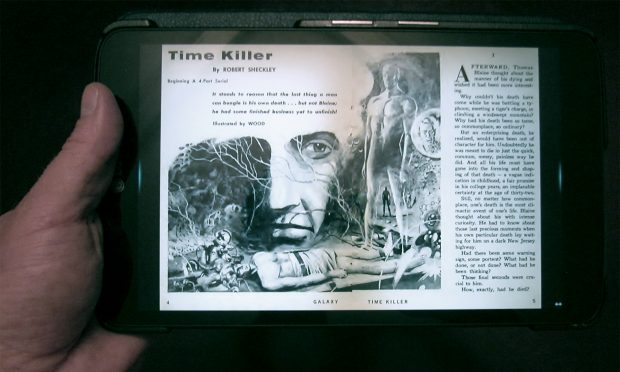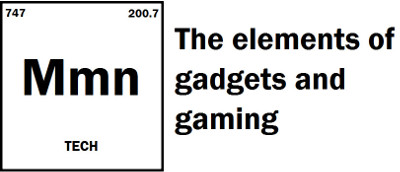

Why didn’t eBooks take over – a consumer’s perpsective
In November 2007, Amazon put out their very first Kindle eReader. Its ludicrously chunky by modern standards. It also wasn’t it the first of its kind. However, the Kindle was the first to establish a convenient ecosystem surrounding eBooks. It was to digital reading what the iPod was to digital music. At the time, many pundits hailed it as the forthcoming of a truly paperless society. One where all the world’s great literature would be carried with us on a pocket sized device.
Yet here we sit in 2021, some 13 years later, and eBooks have yet to take over. A poll by Pew Research found that two thirds of Americans had read a physical book in 2017. Worldwide, eBooks and hardcovers combined only represent about 25 percent of new book sales. Indeed, the sale of digital literature seems to have peaked, and is actually on the decline. This absolutely flies in the face of other media sales, where physical copies have been relegated to increasingly niche audiences.
So what happened? Why didn’t eBooks light the world on fire in the same way digitally distributed music and movies did? Well, I’m mostly going to be speculating here based on my own experience with eReading. However, I think there’s a lot of different reasons, from a consumer’s perspective, that have stalled their adoption.
We all know that smartphones changed media consumption in a fundamental way. Basically fulfilling the futuristic vision of having access to the entire breadth of humanity’s art and media on a single, pocket sized device. Music especially is mostly listened to on phones these days. It’s gotten to the point where it’s getting hard to find decent home Hi-Fi gear. Yet when it comes to reading, smart devices have never been particularly ideal.
The average smartphone display is quite a bit smaller and narrower than most paperback novels. That’s fine for watching videos or browsing the dumpster fire that is social media. Just not for reading long format works. Of course there are larger devices available that can closer replicate the experience, such as Apple’s iPad Mini. Or you can be like me and read eBooks on a mammoth 12” tablet, akin to folding out a hard cover and laying it out on a table. Yet all these devices all suffer from the same fundamental flaw. That is that reading text on any sort of conventional display is a wee bit rubbish.
One of my favourite summer activities is to lounge in the back garden with a good book. In fact, this is where I do most of my reading. There’s fewer distractions. Over this past summer, I had taken to borrowing eBooks from my local library since it was difficult to go in person. I already paid for them via my taxes, so might as well take advantage of the service. The problem is that reading off my Surface Pro in any outdoor lighting conditions is an exercise in frustration. LCD and OLED displays in general just aren’t ideal in this environment. The glossy glass touch digitizers, that turn your device into one big, greasy mirror, certainly don’t help. So you have to crank the backlight up to high in order to see what you’re reading. That kills battery life, which means you won’t get many pages under your belt before having to recharge. Even then you still have to tilt and angle to keep it out of the sun. Sort of like the reverse of trying to use a Game Boy at night. Come to think of it, why don’t eReaders use reflective LCDs?
Now, when it comes to indoor reading, looking at a bright screen in low light conditions, for long periods of time, is known to cause eye strain. It can also mess up your sleep cycles. Which is a bit of a problem, since most of us do our casual reading in the evenings or in bed. So basically tablets and phones just aren’t good for any environment.
So then we have purpose built eReaders, like the Kindle. They use e-ink technology that manages to replicate the look and feel of text on paper. Since they don’t need a backlight, they can also go weeks without having to be recharged. This is heads and tails better than reading on any conventional display. However, eReaders come with their own unique problems. The most obvious of which is the fact that they are a single purpose device.
One of the best use cases I’ve seen for them was a man who does solo sailing. Since he’s likely to be at sea for weeks at a time, with few entertainment options, an eReader allows him to pack a lot of reading material into one small package. When you’re stuck on board a boat that’s no bigger than a camper trailer, any space saved is a bonus. This I think makes them ideal for frequent travellers in general. However, most people typically aren’t going to be away from their home libraries for extended periods. Nor do they need to have more than one book on hand at a time. Few read multiple novels at once. If you’re like me, it takes you forever to get through just the one. So you’re basically trying to save the space and weight that a paperback would take up, with something the same size and weight of a paperback.
E-Ink is also not that great a replacement for conventional displays. Response times and colour reproduction are abysmal. So it’s not like you can just take a bog standard Android tablet and merge the advantages of both devices into one. So you’d still need to bring two items with you, unless you’re a masochist and want to go through the nightmare of reading a book on your phone.
As for usability, reading books on an eReader is just fine. Especially since devices have gotten a lot smaller and sleeker than that first Kindle. But here is where the convenience factor continues to blur between them and paper books. For starters, they’re not all that useful for reference material, comics, or manga. Again due to the poor colour reproduction and smaller sizes of the e-ink displays, if they’re in colour at all. And while they do have search abilities, trying to find a specific page really isn’t that much easier than it is flipping to the index in a regular book. Unlike other types of media, there’s really no obvious advantage to using digital over physical. Plus people just seem to like the look and feel of traditional paper.
Then there’s the issue with distribution. With paper books, when you buy it, you own it. Now, you’re obviously not allowed to make copies of it, but you’re free to trade or sell it. With eBooks, you’re only licensing out a copy. That license can easily be revoked through the use of DRM. Such as back in 2009, when Amazon ironically removed copies Nineteen Eighty Four from Kindle devices, without notifying users. This was due to a copyright dispute, but there’s nothing stopping them from wiping out your library at any time, for any reason. An issue which has only gotten more relevant following the utterly insane decision to ban the sale of several Dr. Seuss books. This effectively opens the door to certain subjectively “offensive” material being memory holed. Or again, your favourite novel could just get zapped due to an issue with publishing rights. Fact is you have no control over that, where as paper books cannot be taken away from you. At least not without some kind of physical force.
Now, the one advantage eBooks do have is they tend to be cheaper to buy than paperbacks, and certainly hardcovers. Then again, so is borrowing books from the local library. Oh, and there’s also the problem that a lot of eReaders use proprietary formats linked to their specific storefront. So good luck borrowing eBooks, or trying to use Kindle purchases on your Kobo. Again making the devices all the more inconvenient. Now there are alternatives available, such as the Onyx Boox. Which for a Chinese product is oddly decent. Since they run Android, all Boox readers supports every e-book format available, including Amazon and Kindle. So they’re a much better option in my opinion than the more mainstream eReaders. The downside is that, since Android isn’t optimized for eReading, battery life is a bit worse. They’re also impossible to find here in Canada without having to import them from the States.
But I think the biggest killer of eBooks has been the rise of audio books. While originally designed for the blind, they’ve enjoyed a renaissance of sorts in recent years. Busy people can now catch up on a novel while exercising or driving to work. And they work across all smart devices. With these, the convenience factor is very clearly defined.
I don’t think eBooks will go away, but I don’t see them taking over anytime soon. The good old paperback will continue to rule the reading world, at least for the foreseeable future.


